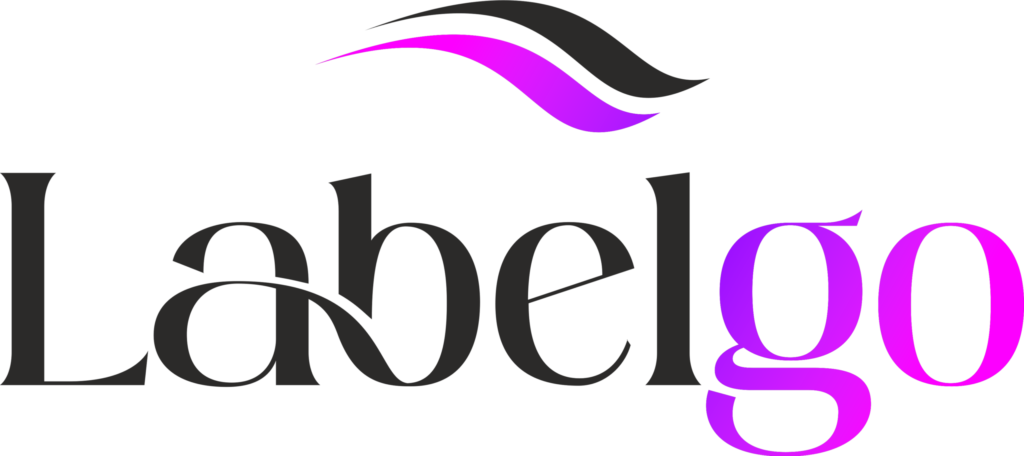Choosing the right label for your clothing line is one of the most critical decisions you’ll make in the branding process. It’s more than just a piece of fabric with your logo; it’s a statement about your brand’s quality, attention to detail, and aesthetic. The wrong label can feel scratchy and cheap, while the right one can elevate a simple garment into a premium piece. But with so many options available—from woven to printed to heat transfers—how do you choose? This guide will walk you through the key factors to consider.
Understanding the Main Types of Clothing Labels
First, let’s break down the most popular types of labels used in the fashion industry, each with its own set of pros and cons.
Woven Labels: The Mark of Quality and Durability
Woven labels are created by weaving threads together on a loom to form the design. The logo and text are an integral part of the fabric itself, not just an ink-stamped surface. This method is the gold standard for high-end fashion brands.
- Pros: Extremely durable, colors won’t fade or crack, professional and premium feel, can achieve intricate details (especially in damask), soft and comfortable against the skin.
- Cons: More expensive than printed options, can have a slightly longer production time.
- Best for: High-end apparel, designer collections, durable outerwear, items where brand longevity and a luxurious feel are a priority.
Printed Labels: Versatility and Cost-Effectiveness
Printed labels are made by printing your design onto a fabric base, such as satin, cotton, or polyester. This method allows for a wider range of colors and photographic-style detail.
- Pros: Affordable, quick to produce, can handle gradient colors and complex designs, no minimum color count, versatile across different materials.
- Cons: Can fade, crack, or peel over time, might feel less premium than woven labels, some materials can be scratchy.
- Best for: Fast fashion, promotional items, bulk orders, items with very complex logos or a large amount of information.
Heat Transfer Labels: The Tagless Comfort Option
Also known as “tagless labels,” these are printed designs that are heat-pressed directly onto the garment’s fabric. You often see them on athletic wear, t-shirts, and baby clothes.
- Pros: Extremely soft and comfortable (no tag!), great for sportswear and children’s clothing, smooth finish, no risk of scratching.
- Cons: Can fade or crack over time and with many washes, might not be suitable for all fabric types, limited space for information.
- Best for: Athleisure, undergarments, baby and children’s apparel, products where comfort is the top selling point.
Hang Tags: The First Impression
While not sewn into the garment, hang tags are a crucial part of a brand’s labeling strategy. They are a brand’s first physical touchpoint with a customer in a retail setting. Made from paper, cardstock, or other materials, they often contain pricing, sizing, and brand story.
- Pros: Excellent opportunity for storytelling, can be customized with special finishes (foiling, embossing), removable and not a factor for comfort.
- Cons: Not a permanent part of the garment, can be an added cost.
- Best for: Every brand! They are essential for retail and a great place to showcase your brand’s personality.
Key Factors to Consider When Choosing Your Label
Now that you know the types, here’s a checklist to help you make the right choice for your brand:
Brand Identity and Target Audience
Your label should reflect your brand’s essence. Are you a luxury brand focused on quality and craftsmanship? Woven labels will align with that message. Are you an eco-conscious brand? Look into printed labels on recycled cotton or bamboo. Are you an athleisure brand that prioritizes comfort? A heat transfer label is the perfect choice.
Product Type and Fabric
The garment itself plays a huge role. For a delicate silk blouse, a soft satin or damask woven label is ideal. For a rugged denim jacket, a heavy-duty taffeta woven label or a durable printed cotton label works well. Always consider how the label will feel against the skin and if it will withstand the intended use of the product.
Budget and Production Volume
Your budget will often dictate your choices. If you’re a startup with a limited budget, printed labels are a fantastic way to get started. As your brand grows, you can invest in the premium feel of woven labels. Also, consider the minimum order quantities (MOQs) for each label type, as this can affect your costs.
Required Information
What information do you need on your label? Care instructions, fiber content, country of origin, and size are all requirements in many regions. A printed label can often fit more text easily, while woven labels might be better suited for just a logo and a few key details, with the rest on a separate tag.
Conclusion: The Label Tells Your Brand’s Story
Your garment label is a small detail with a huge impact. It’s the final touch that communicates your brand’s commitment to quality and your unique identity. By carefully considering your brand, product, and budget, you can select the perfect label that not only looks great but also enhances the customer’s experience. Choose wisely, and let your label tell the story of your brand, one stitch at a time.
